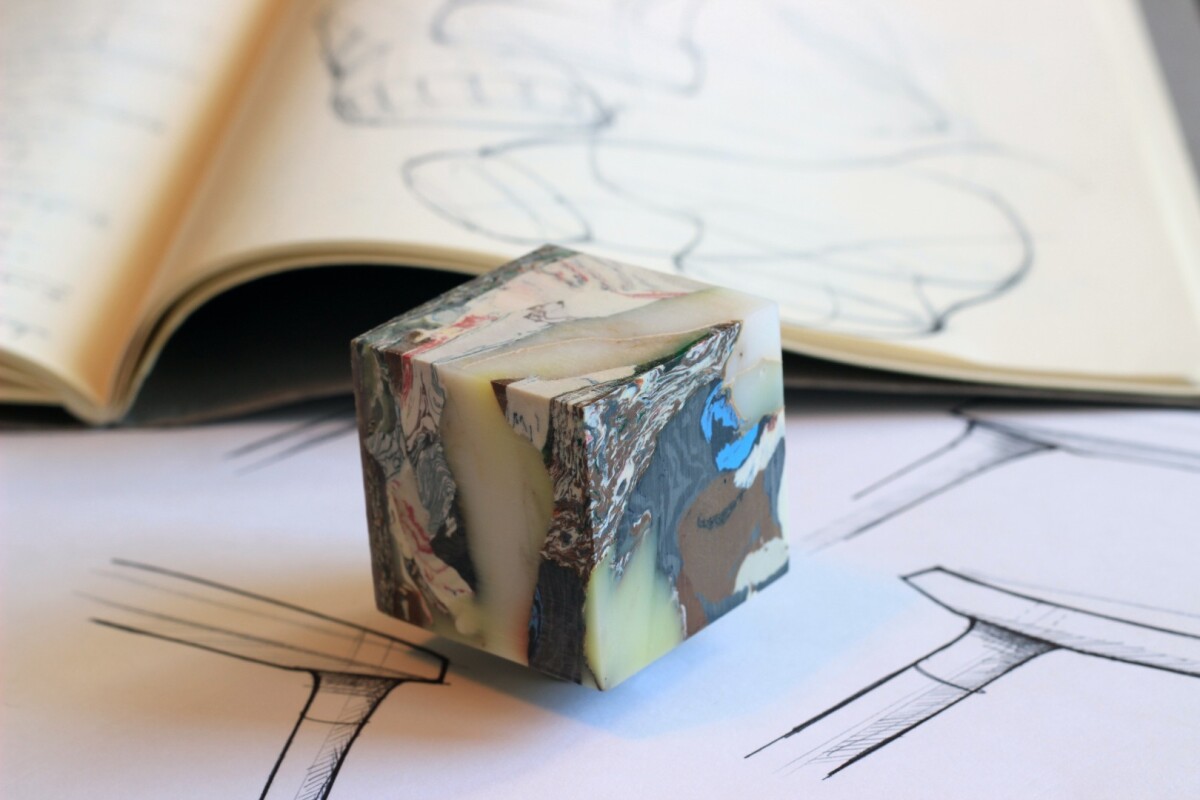Industrial designer Carter Zufelt has created a new process for recycling discarded plastics. Unlike most current methods, his is able to transform garbage into uniquely-crafted art. Not only can the process be replicated in the comfort of one's own home, but through his sustainable project Müll, Zufelt is choosing to make it available to all those interested.
It's no secret that humans create an enormous amount of trash, leaving only a fraction of it to be effectively recycled. It takes creativity and experimentation to turn waste into wonder, such as how Plastinova makes wood-like material out of recycled plastic and leftover pulp from tequila manufacturing. Zufelt's process is similar, in that the end result is incredibly dense and can be altered with the right tools (such as a CNC machine).
Unlike recycling performed by big companies, Zufelt's technique is designed to retain the ability to manipulate the plastic. So instead of a uniform product that comes about from mass-produced pellets efficiently injected into a mold, his pieces showcase complex patterns, swirls, and colors. By being selective in the choice of plastic and knowing how to create such textures, his process is comparable to that of glass blowers creating rare, detailed works of art. Zufelt's results look more like carved marble than recycled plastic.

"The manipulation involves multiple baking sessions, twisting, folding, and compressing," says Zufelt. "I found, after months of experimentation with loads of failed attempts, that the trick is the right amount of heat coupled with the right amount of pressure. It's a longer process, but, as you've seen, the end results are fantastic."
Although any type of recyclable thermoplastic can work (such as PVC, polystyrene, acrylic, polyester and nylon), Zufelt's initial focus has been polyethylene in the form of plastic bags. Polyethylene, specifically HDPE, has a high strength-to-density ratio, is widely accessible, and can be found in an abundance of colors. Common sources of HDPE are milk containers, tupperware, oil/shampoo/detergent bottles, and of course, the ubiquitous grocery bag.
"Plastic bags cause huge problems in the environment and they are everywhere, often slipping through the cracks because they are small and extremely thin," observes Zufelt. "Most people won't throw a laundry detergent bottle in the woods. People are way more apt to toss a plastic bag in the streets rather than a big bottle, so I focused on those initially."

The Müll project has just launched on Kickstarter and is looking to fund its US$25,000 goal within 42 days. A basic pledge of $15 gets you a completely unique 1-inch cube made entirely of recycled plastic, saving half off the planned retail price. Higher-tier pledges offer multiple cubes as well as handcrafted desk organizers. Backers can also opt to receive a free 1.5-in cube for every 100 plastic bags sent in.
But those who are interested in learning how to perform this recycling method on their own can pledge $5 (alone or in addition to other rewards) to receive a PDF outlining the instructions, which includes cleaning and preparation (the consensus is that HDPE is safe to heat). One simply needs an oven, which makes regulating temperature easier in order to melt (not burn) the plastic, as well as some tools to manipulate and press the material.
So long as Zufelt has enough bags to meet demand, and that the crafting process goes according to plan, backers can expect physical rewards to start shipping sometime between March and May, 2016. Shipping is free to the US, with worldwide shipping only to select countries. Delivery of the PDF instructions can be expected sometime in January.
Sources: Carter Zufelt, Kickstarter












